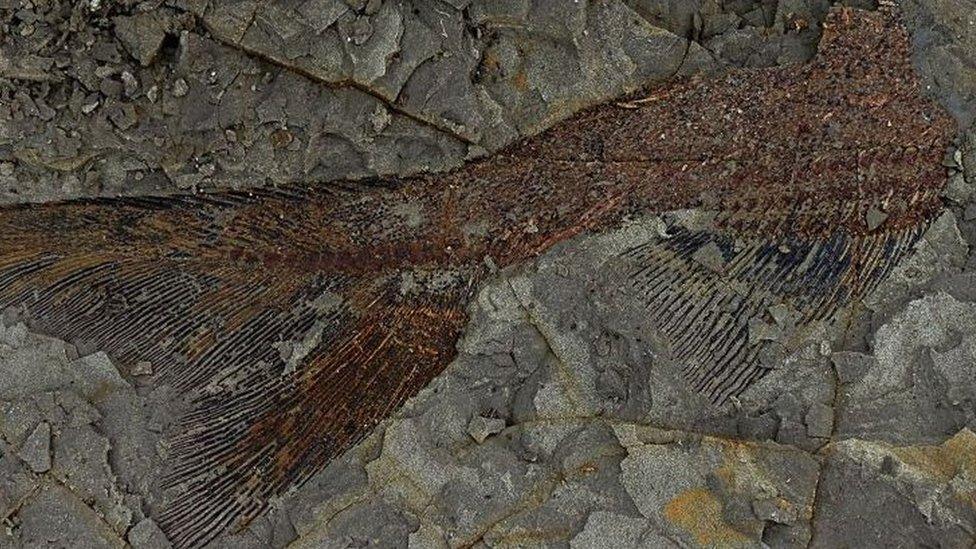How do scientists know how old something is?
- Published
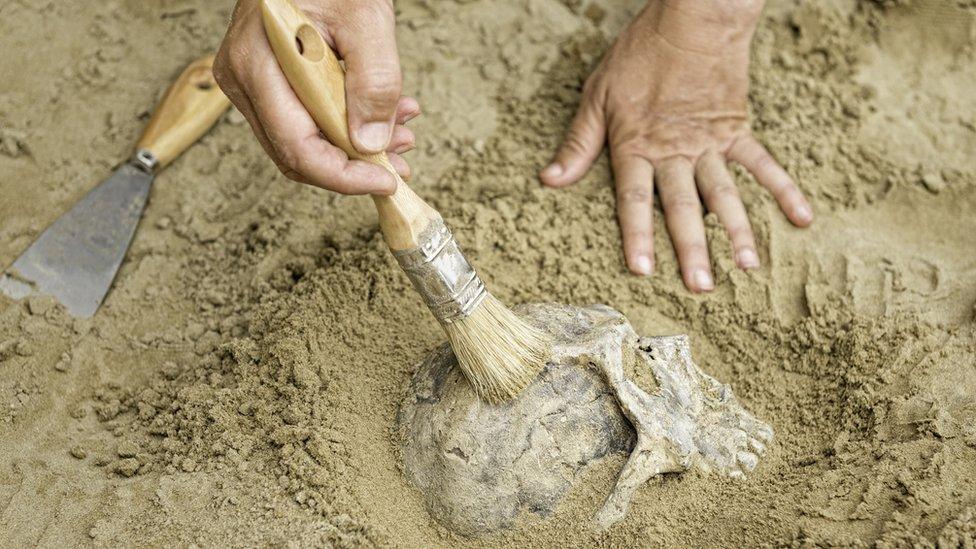
Ask any teenagers in your family - dating is hard! It's also hard for archaeologists, but we're talking about a different kind of dating!
When archaeologists want to learn about the history of an ancient civilization, they dig deeply into the soil, searching for tools and artefacts to tell the story.
But once a bone, fossil or ornament is found, have you ever wondered how scientists figure out how old that thing is?
Well researchers, scientists and archaeologists use lots of techniques and here are just a few...

Looking at the design of objects, like these Roman pots, can explain a lot about how old they are
Relative Dating
When experts dig stuff up, they often look at things around the object and how deep they are in the ground. Some things like pottery, art or tools are specific to certain time periods, like the Roman era for example.
By looking for things like this, you can kind of figure out the period that the object came from.
However, new technology means there are lots of other ways to work out the age of something.
Carbon Dating
Big Question: How does carbon dating work?
Carbon dating is a way of working out how old something biological is. That means things like bone, cloth, wood and plants from fairly recent history, about 50 - 70 thousand years. Trust us, that is fairly recent compared to some things like dinosaur fossils!
So how does carbon dating work?
This sounds very technical, but cosmic rays, which are radiation from space, enter the Earth's atmosphere every day. For example, people and plants are hit by the rays all the time, but don't worry they are perfectly safe. As part of the process, cosmic rays create something called carbon-14.
Atoms combine with oxygen to form carbon dioxide, which plants absorb naturally. Animals and people eat plants and carbon-14 goes into animal and human bodies, when people and animals die the carbon-14 can still be found as a radioactive material called radiocarbon.
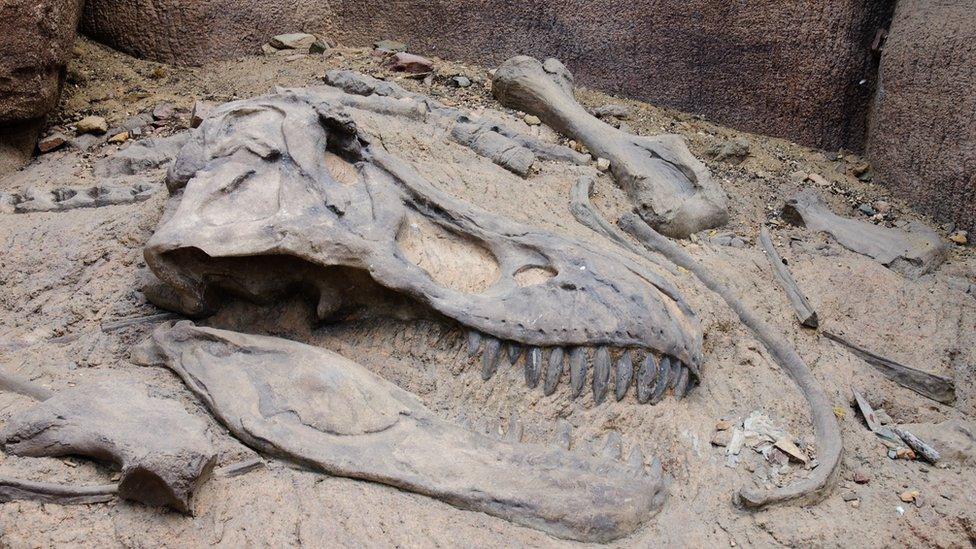
Dinosaur fossils are very old, so scientists look at the layers of rock around them to work out how old they are
How to age dinosaur fossils?
Finding out the age of dinosaur fossils is difficult because they are really, really old. That means carbon dating won't work.
Millions of years ago, when a dinosaur died, often their bodies were covered by sand and dust which is called sediment. Over time the sediment and bones gradually turned into rock.
Unfortunately for palaeontologists, the scientists who dig up dinosaur bones, sedimentary rock doesn't contain the radioactive materials they need to work out the age of something.
So to work out the age of dinosaur fossils palaeontologists have to find other types of rock nearby. A type of rock that is easier to know the age of is volcanic ash. Layers of volcanic ash within the rock acts like bookends - giving a beginning and an end to the period of time when the fossil formed.

The rings in wood can tell researchers a lot about the life of a tree
Dendrochronology
Dendrochronology is a scientific method that looks at the rings in wood from trees.
If you look at a tree stump or a piece of wood, you might have noticed it has rings and patterns. The rings are created as the tree grows and gets older. They are a natural pattern of life that scientists can then look at and work out the year that each ring was grown.
This is a very useful tool when trying to find the age of buildings and art that contain wood.
So how do scientist figure out the years a tree lived in?
The same type of trees, growing in the same area at the same time will have matching characteristics. This can be things like thickness and colour.
By doing this scientists can look at lots of records of environmental changes, such as very hot or wet weather and work out the period in which the tree lived and when it experienced these conditions.
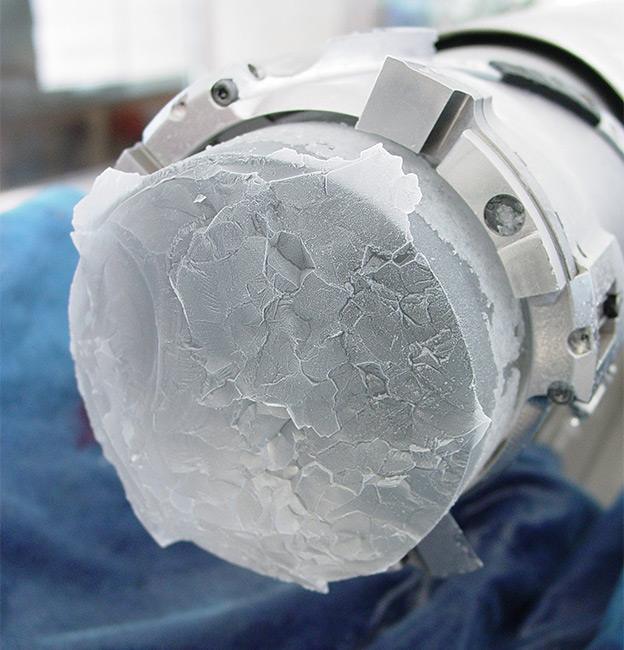
Scientists extract chunks of ice to learn about the world's climate at different times throughout history
Ice Cores
Just like archaeologists dig into the ground to learn about different periods in time, scientists who study the Earth's climate, called paleoclimatologists, take a similar approach.
However, instead of digging into the soil, they look for clues about our planet's climate history by studying coral reefs, digging into ocean and lake floors, or drilling deeply into glaciers and ice sheets.
Ice sheets and glaciers near the North and South Pole formed after years and years of snowfall, the snow is pressed together by more layers of snow and end up forming thick layers of ice. In some areas, these layers result in ice sheets that are several miles thick.
Scientists drill deep into the ice to take samples, each layer of ice tells a story about what Earth was like when that layer of snow landed gently on the ice. These layers of snow which formed into layers of ice contains particles of dust, ash and even pollen all of which were in the Earth's atmosphere at the time.
Amazingly these particles stay within the ice for thousands of years and reveal information about past global events and more recently the impact of climate change.
- Published31 May 2019
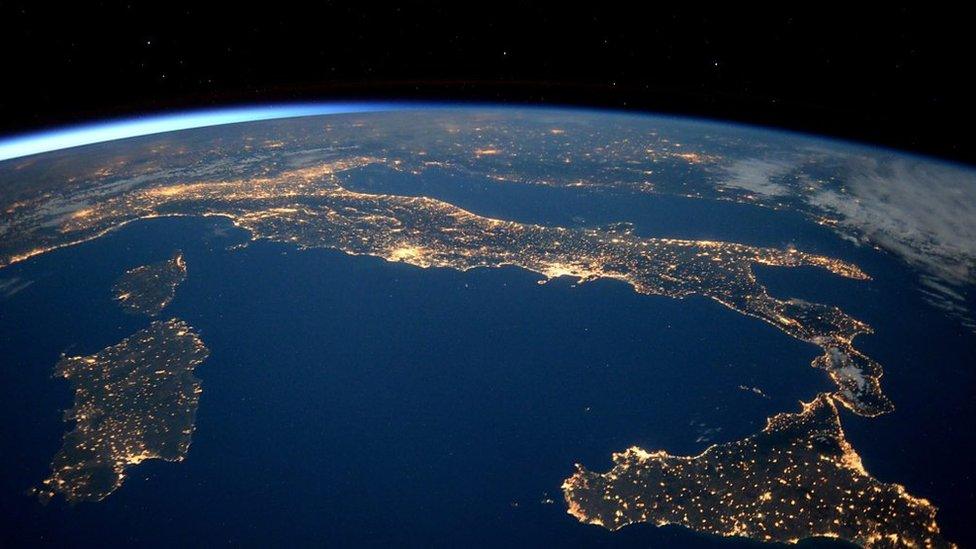
- Published15 June 2018
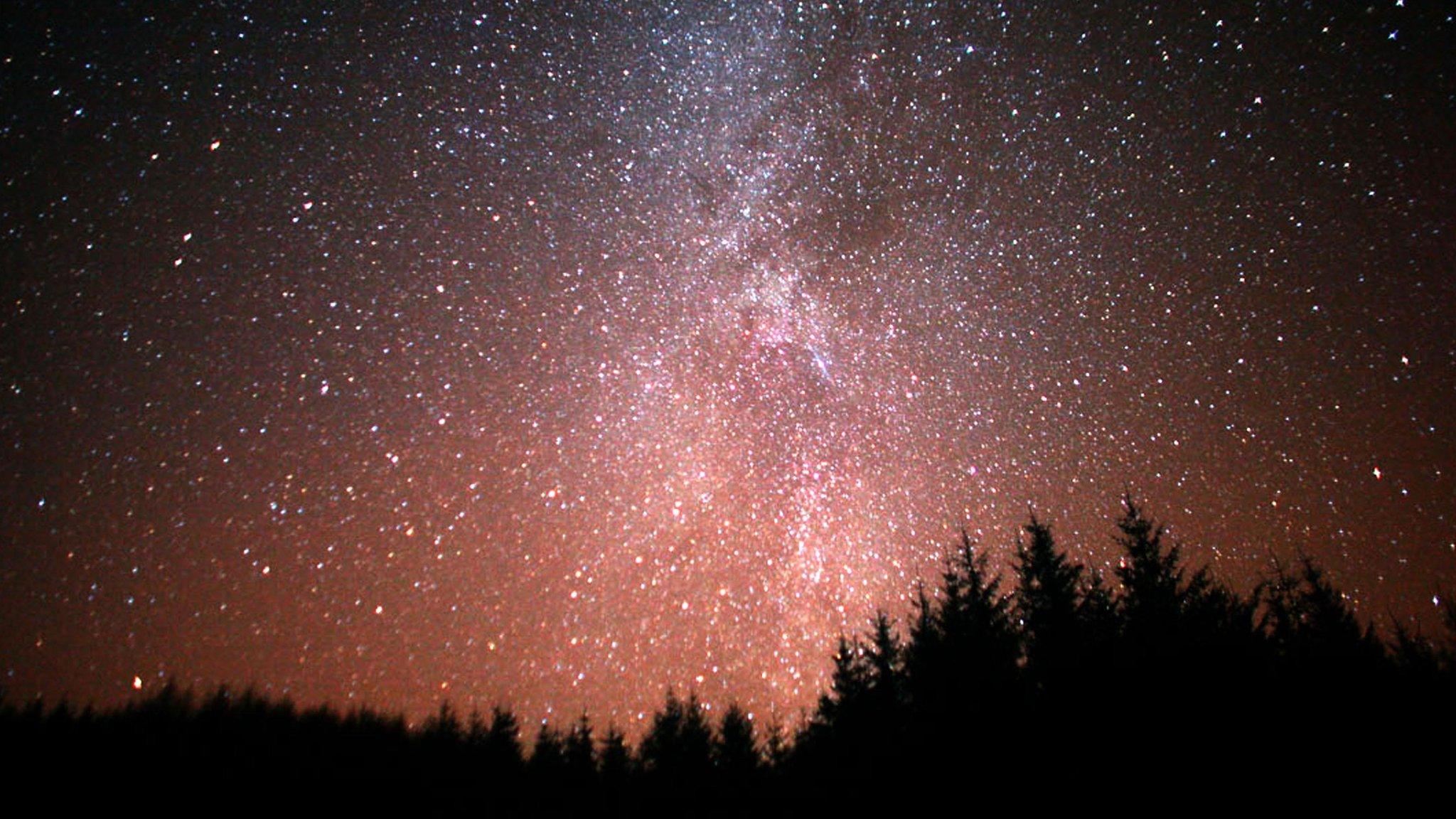
- Published6 December 2017
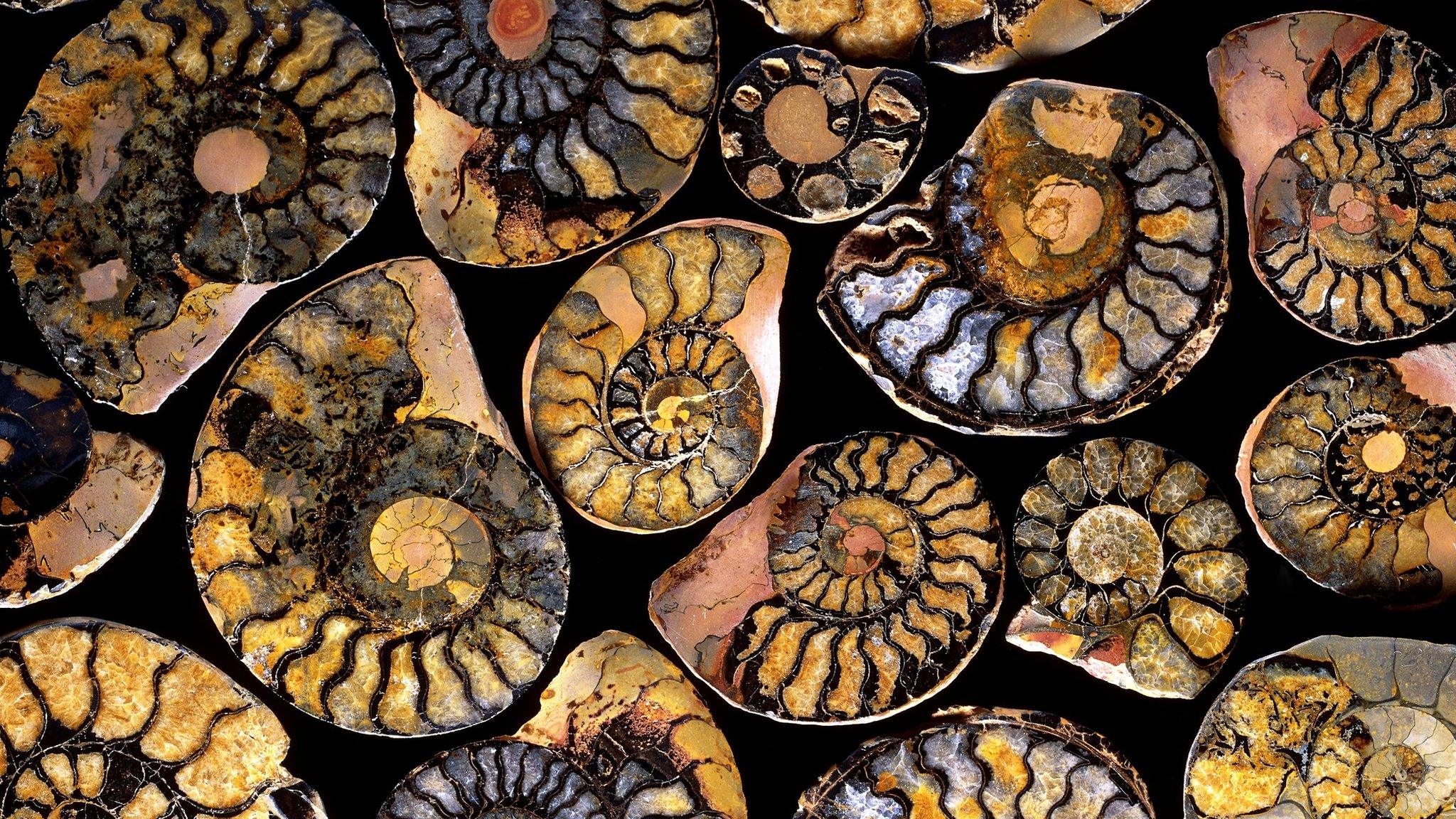
- Published1 August 2019
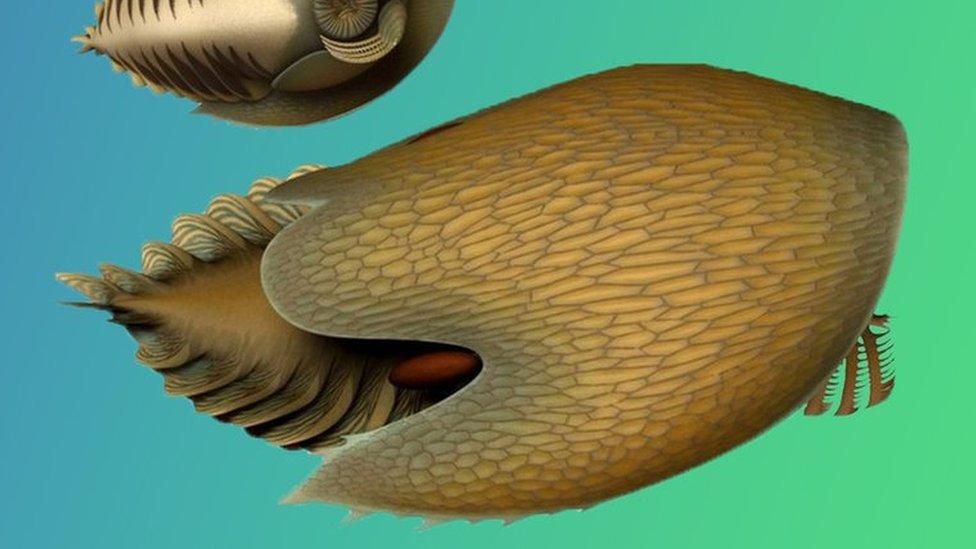
- Published2 April 2019
